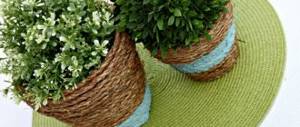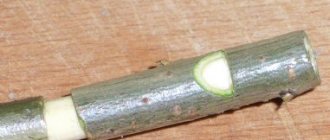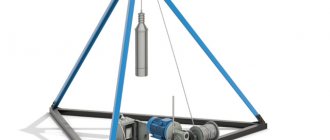Modeling from plastic material is considered a useful and exciting activity. This type of activity is suitable for different age groups. Various types of materials are used to create unusual crafts. Most often used: salt dough, plasticine or polymer clay.
Polymer clay for modeling is especially popular among handicrafts. This material contains safe chemical plasticizers and thickeners.
These substances have no effect on the human body. The products are realistic and quite durable.
Description of polymer clay
Polymer clay is a composition based on synthetic components with high plasticity. Outwardly, it has some similarities with ordinary plasticine.
Modern polymer compositions are divided into two categories. These include:
- cold porcelain;
- thermoplastic;
- self-hardening composition.
Cold porcelain is used to create thin and miniature parts. It hardens on its own at a temperature of 25 degrees. The finished products are realistic.
Most often it is used when creating flower arrangements. The material is highly deformable. This clay is used for children's crafts. It does not release chemical compounds upon contact with delicate skin.
Thermoplastic is a thick viscous composition with excellent ductility. How to make a craft from such clay?
The creation process is divided into several stages:
- the first step is to heat up a piece of clay;
- Then they use special tools for sculpting. They help create deep textured lines;
- When the craft is ready, it is sent to a special oven for baking. To do this, it is recommended to purchase equipment in handicraft departments.
It is prohibited to bake the product in a conventional oven. When heated, the material emits a toxic odor, which can cause poisoning.
Self-hardening compositions are used to create dolls, flower and decorative compositions. Upon completion of sculpting, it is enough to leave the product in the fresh air for 15 hours.
What types of modeling clay are there?
There are only two types of clay used for personal purposes at home. Each mixture has individual properties. Therefore, we propose to consider in more detail the possible options and rules for their use for sculpting.
Polymer
A fairly common option that can be found in any store. Moreover, such raw materials are easy to prepare yourself. This material works well in applied arts; many children begin their creativity with this composition.
Remember that the hardening process begins while you are working. Mixing latex glue will help solve this problem.
Baked clay and its properties
This type of material is considered one of the most durable and is used exclusively for pottery by both adults and teenagers. However, this version of the material may differ in texture, presence of impurities and other components. Many varieties are designed for specific types of creativity. Despite its low cost, this type of clay, with the right approach, can turn into a masterpiece.
Drying is accompanied by a darkening of the shade of the clay, so before kneading it is better to add a dye of the desired color
Self-hardening type of clay
The property of this type of clay is its ability to harden without heating in the open air. By its properties, the material resembles airy plasticine, only the clay can always be soaked in a timely manner. This method is used if something needs to be corrected. Most often, this raw material is used to create flat figurines, accessories, magnets and other parts with low weight.
It is not recommended to give clay to children under three years of age; children may swallow a piece of material.
Additional components
Then add one and a half large spoons of glycerin, the same amount of cold cream with lanolin and white vinegar to the contents of the pan. Heat the mixture over the same heat as before until it turns into a homogeneous mass that comes away from the sides of the pan.
Be careful not to overheat the components to prevent them from hardening too much. This is the main answer to the question of how to make polymer clay soft. You can also dilute the finished mixture with water, but this must be done carefully and measuredly so as not to overdo it.
Don't be intimidated by complicated ingredient names! They are actually very easy to get. Glycerin is widely used in baking and is sold in grocery stores, while cold cream with lanolin can be purchased in cosmetics departments.
Further actions
Knead the material until it becomes perfectly smooth. The clay should be similar to pizza dough. Roll it into a sphere and place it in an airtight container, removing as much air as possible before doing so. If the mass has not yet cooled completely, place it in a bag with a small gap. And after the temperature finally drops, put the workpiece in the refrigerator.
To make jewelry from polymer clay, lubricate your hands with cream. This way the material will not stick to the skin. Roll out the mass and mold it into any parts you need. Then combine them together and wait at least a day for the clay to dry completely.
After that you can start working with color. You will need to paint even the areas you want to be white. Otherwise they will turn out transparent.
How to prepare clay for modeling at home with your own hands
In most cases, clay with a polymer composition is used at home, so we will learn how to prepare it with our own hands in order to save money and create a natural product for creativity.
First recipe: using water, salt and flour
One of the simplest ways to prepare the material is considered quite fast and fun.
We will need:
- flour - 1 glass;
- water - 1 glass;
- fine salt “Extra” - ½ tbsp.
After removing it from the refrigerator, you should not heat the material on the fireplace or radiator.
Method of preparation:
- Mix salt with water until completely dissolved.
- Add flour and knead the dough.
- We wrap the workpiece in cling film and put it in the refrigerator for six hours.
- Color if desired.
You can immediately use it for modeling, but then the material will not be so viscous and elastic. It will be difficult to make miniature and too dense parts.
Second recipe: homemade artificial clay
The fewer components in factory clay, the more convenient it is to work with it.
Using this recipe, you can prepare modeling clay in the amount of 350 g. To make it you will need:
- PVA glue - 1 cup;
- corn starch - 1 cup;
- Vaseline - 1 tablespoon;
- hand cream - 1 tablespoon;
- lemon juice - 2 tablespoons;
- enamel dishes;
- board, spatula.
Cooking method:
- Mix the glue and starch together, forming a homogeneous consistency.
- Add lemon juice and mix everything thoroughly again. Make sure there are no lumps. We carry out all actions in enamel dishes.
- Place the dough in a glass bowl and microwave for 30 seconds.
- Then, mix everything again and put it in the microwave for another half a minute.
- Take a board and thoroughly knead the clay, after covering it with hand cream.
- If a crust forms on the material after heating, it must be removed using a spatula.
Then the clay can be used for its intended purpose. It can be painted.
Third recipe: cold porcelain
Always hide leftover material in a sealed bag.
The most unusual accessories are most often made from this type of raw material. Some even choose to create jewelry and sell it. To prepare “cold porcelain” you will need:
- PVA glue and moment 1:1 (approximately 350 g);
- corn starch - 150 mg;
- citric acid - 1 teaspoon;
- glycerin - 1 teaspoon;
- plasticizer - 2 tablespoons;
- hand or face cream.
Cooking method:
- We collect glue, glycerin, starch and citric acid in one container. Mix so that there are no lumps;
- Place in the microwave for 60 seconds, then mix everything again;
- We send it to the microwave for 30 seconds, and after the third kneading for another 15 seconds.
- At the end, add the cream, then grease the cling film with Vaseline, and then put it in the refrigerator for a day.
After this time, the material can be used. Such clay hardens on its own when left in the open air for a long time.
Color solutions for material
Clay is sold in special bags in which its moisture, elasticity and shade are preserved. This material is painted with special paints of different colors. For example, brighter colors are perfect for children's hobbies or interesting designer crafts for sale.
Only freshly produced glue can be used. Expired ones lose their properties over time
As for natural shades, they are more often used for decorative purposes. Before creating the required tone, the material is kneaded and only then color is added. The most popular and sought after shades are:
111
- yellow;
- violet;
- red;
- blue;
- orange;
- blue;
- green;
- light green.
They try to use more muted or darker tones of the palette in creativity as an emphasizing color that completes the craft.
Many people use food coloring for homemade clay.
What modeling technique is used at home?
Young masters often face the problem of preparing some fragments of figures. In order to avoid them, you have to be able to work with some hand-sculpting techniques. These include tow and on a potter's wheel.
Shelf life plays an important role in the properties of clay
Modeling with flagella
Perhaps one of the methods that is suitable for beginners. According to art experts, the rope technique has remained unchanged even over time. As for its use among children, it is quite useful, as it has a positive effect on fine motor skills and the formation of the central nervous system.
The more colored pieces of clay in the package, the more interesting it is to work with it
Using a pottery wheel
The technique used when working with a pottery wheel is quite complex and involves several important points.
- All movements must be performed smoothly using the left and right hands simultaneously.
- When working with a wheel, some of the clay should always be visible between your hands.
- Under no circumstances should you hold your breath, as this affects the pulsation of the veins in the arms;
- The longer you work with the product, the faster it gets wet.
Try to sit down to create only in a good mood. The result of the finished product is primarily influenced by a positive mood. You can learn more about the sculpting technique in the video below.
Dear readers, if you want to learn something else about modeling clay, and also have personal secrets for preparing it, be sure to share your opinion under the article. We are happy to answer all questions and provide the necessary tips.
We bring the material to working condition
Start pouring cornstarch into the container. In total you need to use half a glass of powder, which you will add to the main composition in small parts. To prevent lumps from appearing, remember to stir the contents of the pan all the time until it begins to pull away from its walls.
Over time, the clay will harden and become more difficult to mix. But you can’t stop until you pull the mass out of the pan. Then knead it for 20 minutes, placing it on baking paper.
The mixture will be hot, sticky and lumpy. Once you knead it, it will become smooth and even. Then leave it on the counter until it cools down. Wrap the finished clay in a plastic bag, releasing all the air from it. From the resulting material you can make a wide variety of jewelry and accessories. Use acrylic paints to add color to the details.
Tips for choosing modeling clay
Before you start choosing clay for a home master class, you need to carefully study all the market offers, find out the composition of the raw materials you like, decide whether the shade is suitable and, of course, whether the material corresponds to the purpose for which it is purchased.
To create artistic products
If you plan to work on a pottery wheel, then you need to pay attention to what the material is intended for. Usually all the information is indicated on the packaging. For example, for applied art or sculptural crafts, you should use only a special material; it must be elastic, but at the same time sufficiently elastic.
The psycho-emotional state is improved in the process of work
Don't forget about the color of the mass. Very often, the result of an incorrectly chosen shade affects the results of the work. The finished figure is too dark. This is usually a fatal defect.
If a stove is used to fix the craft, then it is necessary to take into account the temperature that the selected clay can withstand. Ask the seller about this if there is no information on the package. Some materials can be exposed to 1300ºC, while others begin to melt at 1000ºC.
For beginners and children
For those who are just starting to try their hand at art, you can opt for a simpler material - polymer clay. At the same time, for small crafts, preference should be given to a material that dries quickly. As for volumetric sculptures. This is where clay with long-term drying properties comes in handy.
Polymer clay is ideal for creating figures of cartoon characters
In case you are doing creativity for the first time, you should give preference to colored clay. Since it will be very difficult to paint the craft at first.
If you are going to purchase material for modeling for kids, then it is important to monitor the composition. Clay for children's activities should be absolutely safe. It is desirable that the mixture contains liquid softeners, which make the material more functional during operation.
Individual stages of work
Before you start creating clay, it is better to dress in old clothes that you don’t mind getting dirty. How to make polymer clay at home? To do this, mix half a glass of water and 2 cups of glue in a non-stick pan. Boil the mixture for a couple of minutes, stirring it constantly. As with the previous recipe, wood glue is ideal because it is stronger. But children's PVA can also be used.
Now, in a separate bowl, combine the cornstarch and a quarter cup of water and pour them into the main pan. Mix all ingredients thoroughly. After the finished mass becomes homogeneous, cover it with a lid and wait until it cools completely.
If you are going to use food coloring, add a drop or two of your chosen color to the mixture. To achieve a more saturated color, increase this amount. You can also coat the product with paint after it has dried.









